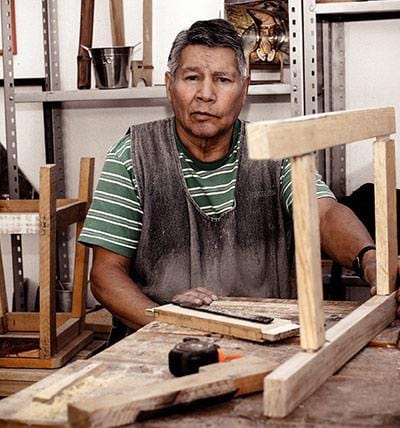The wooden jigsaw puzzle has quickly become a popular past time for many. Whether it is a personal hobby or something fun to do with the whole family, it surely is an enjoyable activity. With many different styles of wooden jigsaw puzzles currently on the market, doing your research before buying the right one will be most beneficial to your experience. There are many great deals on new or used puzzles that will certainly make it easy to add to your collection or perhaps start a new fun activity with the children.
When it comes to framing wooden jigsaw puzzles, it surely is not as difficult as it may seem. With the right tools by your side and following the instructions set out below, you will be framing your wooden jigsaw puzzle in no time and possibly become a pro at doing so.
First Steps To Framing Your Puzzle

So you have just completed a beautiful jigsaw puzzle and the design looks too good to not show off. This is when learning how to frame your puzzle comes in handy and we have set out an easy to follow step by step guide in getting your artwork displayed in your home or even as a gift to a loved one. Let’s take a look at the first steps to follow in framing your puzzle:
- First, you want to grab yourself a reliable and quality glue which is specialized for wooden materials such as your jigsaw puzzle pieces. This will allow you to easily glue each of the pieces together ensuring your puzzle remains intact and ready for you to move on to the next step.
- Next, use a measuring tape or alternative measuring tool to get the exact dimensions of your puzzle.
- You will need to measure the sides and size of your jigsaw puzzle to accurately determine the size of the frame you need to build. Some might prefer buying a frame that is suited to your puzzle style or you can decide to build your own frame from scratch.
- Remember, the dimensions on your puzzle box is not as entirely accurate to base your measurements on, so always measure the puzzle itself once you have completed your assembly.
- Just like framing photos, you will need to create a backing board for support when framing the puzzle. This can be done by using poster board or an appropriate thickness of cardboard. Cut out the backing board according to your puzzle’s exact dimensions. You can make use of a utility knife to ensure you get a clean cut on your board. It is recommended to use backing board material which does not easily bend, as this will assist in keeping your puzzle in place inside your new frame and prevent any warping from taking place over time.
- For additional support, many recommend using wax paper to slide underneath your puzzle to protect the surface of your puzzle in between the backing board. This will maintain the longevity and quality of your puzzle while it hangs up beautifully in your home.
- Next, use a rolling pin or any alternatively rolling tool to gently roll over and on top of your puzzle. By doing so, you are able to flatten the pieces gently into place, preventing any odd pieces from being slightly more raised than the others. This will keep your jigsaw puzzle nice and flat and smooth, making it easy to move onto the next steps of framing.
Almost Ready To Frame Your Jigsaw Puzzle
Once you have completed the steps above, there are a few more steps to include in your process to ensure a quality framing and display for your artwork. For any of the tools or materials such as jigsaw puzzle glue or specialized glue, you will easily find them at your local craft stores. Now, for the final steps before you get framing.

- Using your specialized jigsaw puzzle glue and a paintbrush, brush the glue over the top of your puzzle gently and evenly. Make sure you cover the entire surface area of your puzzle. This will round off the cohesion of your puzzle, keeping all the pieces and smoothed out surfaces in place. Once you have covered your entire puzzle in a layer of glue, make sure you wait the appropriate amount of time for it to dry. It is always best to leave it a little longer than directed, just to ensure the glue is complete dried out.
- Lastly, when it comes to the gluing and securing of your jigsaw puzzle; you will need to glue the backing board you cut out and prepared to the back of the puzzle. Align your puzzle carefully to the edges of your backing board and press down lightly. You might find that some of the applied glue presses out of the edges. If this should happen, you can scrape away any excess glue off the sides and edges, cleaning up the puzzle and backing board. Once you have glued the backing to your puzzle, find somewhere to place your puzzle down and let it dry completely. Try leaving it for a full day or 24 hours to ensure the glue has set entirely.
Finally You Are Ready To Frame Your Puzzle
So now you have followed the steps above carefully and your puzzle has been left to dry out completely. Now for the easy part. If you decided to purchase a frame that suits the dimensions and thickness of your prepared puzzle then this will be a quick and easy step.
Simply place your puzzle into the frame, securing it into the tabs and locks provided. If you have opted for frame with a glass surface, place your puzzle into the glass cover and secure the frames backing board. Having a glass frame cover always looks good and adds a glossy touch your jigsaw puzzle as it hangs beautifully on display. This will also protect it even more from scratches or condensation that may take place over time.
By following the easy step by step guide presented above, you will be able to easily display all your children’s artwork puzzles or even your own in the family home or even wrap it up as a gift for a special hand crafted present to loved one or for birthdays and special occasions. Some people use a photo editor to create their perfect photo, then they make custom made puzzles and finally frame the same puzzle. Try it, it's fun!
ABOUT THE AUTHOR
Aleksandra Djurdjevic
Senior Content Creator
Aleksandra Djurdjevic is a senior writer and editor, covering jewelry, accessories, and trends. She’s also works with services, home décor. She has previously worked as ESL teacher for English Tochka. Aleksandra graduated from the Comparative Literature department at the Faculty of Philosophy in Serbia. Aleksandra’s love for the environment, crafts and natural products over the years helps her continue to be a top expert at Wooden Earth.







